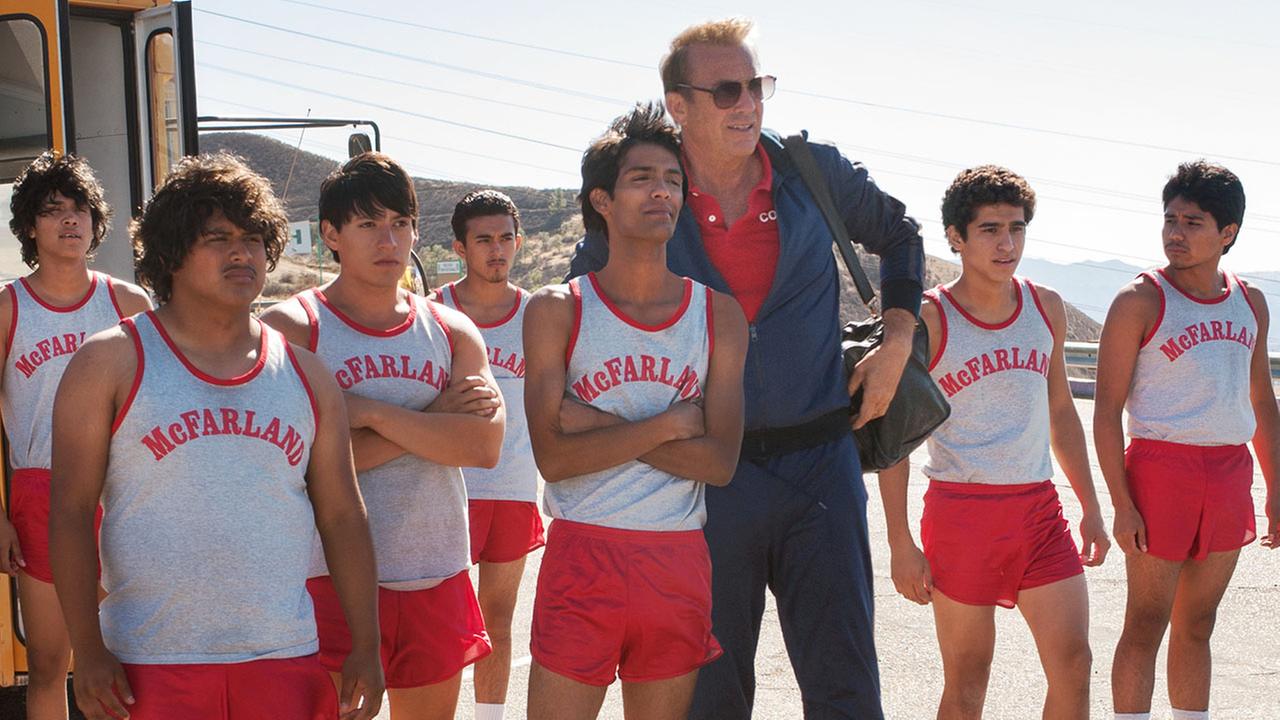Dances With Mexicans, Disney’s McFarland, U.S.A.

By Domino Renee Perez, Ph.D., Director – Center for Mex-Am Studies, University of Texas
For two years in a row, Mexico’s native sons have taken home the Best Director Academy Award, Alfonso Curón in 2014 and Alejandro González Iñárritu in 2015. Both directed innovative films that pushed the boundaries of storytelling and neither focused on Latinos.
Latino directors should not have to tell stories about people from their own community or country of origin exclusively, but given the scarcity of films that feature prominent Latino characters, the opportunity to do so feels like a missed one.
The Media, Diversity and Social Change Initiative (MDSCI) at the USC Annenberg School for Communication and Journalism released a report last fall indicating that Latinos are “almost invisible” in movies, accounting for a mere 4.9 percent of characters in top-grossing films for 2013.
Zoe Saldaña in Guardians of the Galaxy (2014) and Michelle Rodriguez in Furious 7due to hit theaters in April are featured as a part of ensemble casts, but only three recent films have focused on Latino lead characters: A Most Violent Year (2014),Spare Parts (2015) and Disney’s McFarland, U.S.A. (2015).
While A Most Violent Year and Spare Parts have failed to resonate with audiences, Disney’s McFarland, U.S.A. earned 23 million, three times more than the other two films combined.
McFarland stars Kevin Costner as Mr. White, a novice cross country track coach in the San Joaquin Valley, and includes a large cast of Latino actors as Mexican students and farm laborers. White’s guidance and belief in the ability of his Latino students helps lead them to an unlikely victory.
The arc of the film bears a striking resemblance to Spare Parts, about a group of high school students who enter an underwater robotics competition and end up beating the likes of MIT.
When placed side by side, the generic formula of McFarland and Spare Parts is made readily apparent.
Both films are about teachers who contemplate abandoning their Latino students when something more lucrative comes along. Though neither does, the teachers’ lives are transformed as a result of their contact with the hard luck cases turned heroes.
The films also include the same heart-tugging scene of the students frolicking on the beach. Their unabashed euphoria stands in stark contrast with their lives of hardship and economic disadvantage.
An overbearing, drunken abusive Mexican father, who is eventually won over by his son’s success, serves as a foil to the compassionate teachers-father figures.
With both films following the same against-all-odds blueprint, why has one been so much more successful than the other?
One stars “America’s Mexican” George Lopez, the other Kevin Costner.
Audiences can feel good about emotionally investing in these young men because Costner as Mr. White gives mainstream audiences permission to care about Mexicans in the same way he did about Indians after Dances with Wolves, a love affair that did not last.
With the Disney machine working at full power, audiences become emotionally invested and entangled in the lives of these would-be cross country champs, whose brutal lives as field laborers have given them superhuman endurance that is then harnessed for victory.
The film also mobilizes familiar Latino stereotypes, including low-riding vatos, as a means of educating Mr. White about the community in which he lives and to help audiences distinguish good Mexicans from bad.
Costner has said repeatedly that this is an American movie. Perhaps that would explain the U.S.A. in the title, so as not to be confused with McFarland, Mexico, though there is no such place.
Unlike Spare Parts, where the students are undocumented, McFarland‘s champions are American boys, whose families came from Mexico. As proof of their American citizenship status, they all know the words to the national anthem, and the camera is careful to linger on their mouths as they sing the words before the big race.
Based on a true story, the film is set in the 80s, providing a comfortable distance between the racial politics of then and now that allows audiences us to believe what separates the well meaning Mr. Whites of the world and Mexicans is not so great or so complicated that it can’t be fixed with a backyard quinceañera.
The young men in Spare Parts live in constant fear of deportation. The state of their lives as undocumented American teenagers speaks directly to current immigration debates, which some may find too political, too Latino.
Maybe Disney is exactly what Latinos need right now need to market our stories to the mainstream, to show that we are not a threat to the fabric of American life, but very much a part of it.
Domino Renee Perez, PhD, is the director of the Center for Mexican American Studies at The University of Texas at Austin, Op-Ed Project Public Voices Fellow.
[Photo courtesy of Walt Disney Studios Motion Pictures]
